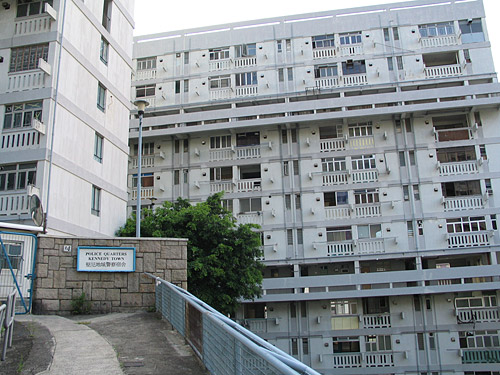No Nonfiction: PL2658.E8
Emily Goedde, a translator of Chinese, has a MFA degree in literary translation from the University of Iowa. Her thesis was entitled “The Many Voices of Zhu Shuzhen.” She is co-editor of eXchanges, The University of Iowa’s on-line journal of literary translation.
Both nonfiction and translation involve the politics of representation. Translators work across languages, cultures, powers. Nonfiction writers take actual occurrences and phenomena and transmit them in their own fashion, thereby raising questions of representation, authority, and authenticity. Hence, translators and nonfiction writers grapple with similar questions: What ethical responsibilities do they have to a text/subject? How do they choose what is represented and how do they chose to represent it? How do their intentions coincide or differ from each other, and how do they compare with those of poets and fiction writers?
It was from a desire to investigate these questions that the idea for a panel was born, one which would consider both the import of nonfiction works into English, and the theoretical concerns common to the genres. The essays here, which bring together the observations and reflections of several writers and translators, were originally written for that panel, “Truth in Other Tongues,” delivered at the 2007 NonfictionNow Conference in Iowa City.
The essays found herein approach the many affinities between the genres and yet demonstrate how the two genres answer the same questions in different ways. Russell Scott Valentino and Diana Thow look at the fundamental abstractions that unite and separate the disciplines. In his essay, “Stations of the Crossing: The Common Source in Nonfiction and Translation,” Russell Scott Valentino evaluates the similarities and differences between the intentionality of nonfiction writers and translators, and how they differ from those of poets and fiction writers, thereby suggesting distinctions between how these diverse groups use their creative talents. In “Translation and Memory,” Diana Thow examines how writers and translators must manipulate memory and forgetting in order to (re)create texts. In contrast, Becka Mara McKay and Emily Goedde chose to focus on specific texts and textual traditions. In “(Mis)Translating the Hebrew Bible: Sacred Texts as Creative Nonfiction,” Becka Mara McKay draws upon comparative translation as a means of revealing the how textual discrepancies in the Hebrew Bible were concealed by redactors and translators, while in “No Nonfiction: PL2658.E8, Emily Goedde explores why so little Chinese nonfiction has been translated into English.
Emily Goedde, Guest Editor
If Confucius were alive today, you would be more likely to find him browsing the nonfiction section at Barnes & Noble than the fiction. In fact, in his collected work, the Lun Yu (論語) or Analects, it is made clear that he considered telling and writing the truth, observing and researching what is and what has come before, vastly superior to invention. According to Chapter 7, Verse 1, “The Master [Confucius] said, ‘I transmit but do not innovate; I am truthful in what I say and devoted to antiquity….’”(translation by D. C. Lau). The beginning of Chapter 7 Verse 27 states, “The Master said, ‘There are presumably men who innovate without possessing knowledge, but that is not a fault I have. I use my ears widely and follow what is good in what I have heard; I use my eyes widely and retain what I have seen in my mind…’” (D.C. Lau). Because of these remarks, and because the way to fortune and fame in China was to be able to write essays and (sometimes) poetry for imperial exams, Chinese culture came to value poetry and nonfiction above fiction and drama.
The subgenre of nonfiction most appreciated in Confucian China was historiography, but many other kinds existed. For example, collections of miscellanea, not unlike their European counterparts, were popular. They included observations on poetry, antiques, objects d’art, and beautiful scenery. Other forms, further removed from their Western equivalents, were also common. For example, just as China doesn’t have an epic tradition, the West doesn’t have fu 賦, a kind of prose poem or rhapsody written in a highly stylized parallel prose, which might be considered a far-distant cousin to the lyric essay or prose poem. Another distant relative, the eight-legged essay, baguwen 八股文, a highly formalized prose style that was a crucial component of imperial examinations in the Ming and Qing dynasties, vaguely resembles the five-paragraph theme.
Despite this rich tradition, other than philosophical texts (I counted 33 translations of the Dao De Jing) very little literary nonfiction has been translated from Chinese into English. For example, in the Library of Congress, David Pollard’s collection The Chinese Essay, the only collection published in English thus far that includes both pre-modern and modern masterpieces of this Chinese literary form, is shelved under the call number PL2658.E8, a number that indicates prose translated into English from Chinese. Searching for works with the same call number I found that out of the 101 entries, only five were works of nonfiction; the rest was fiction. Of the 20 travel memoirs about China, the only translated work was translated from Tibetan not Chinese. Everything else was written by Anglophone adventurers or missionaries.
So, if the nonfiction tradition in China is so important and rich, why is so little translated into English?
The easy answer is there’s no market for it. Another argument is that the content is too obscure, being distanced by both time and culture. David Pollard contests that there isn’t much nonfiction in translation because not many people are interested in translating it. He believes this comes from a Western bias against the essay, which suffers from a lack of “prestige” (24). I wonder if it also might have to do with the fact that Chinese nonfiction doesn’t always correspond with our expectations for the genre, based on how it is appears in English.
This raises the question: Does Chinese nonfiction need to be translated?
I can best address this question with a personal anecdote. This past summer I read an essay written by one of China’s most highly regarded contemporary essayists and cultural critics, Yu Qiuyu. It is called “Shanghai People,” and as the title suggests the Shanghainese are the subject of this astutely written personal essay. I lived for just over two years in Shanghai and was friends with a lot of interesting Shanghai people, most notably Pangpang, my good friend’s boyfriend, who was a rock star hopeful and cultural critic in his own right. I also lived in a converted old Western mansion in downtown Shanghai and shared my kitchen and backyard with an assortment of Chinese families and elderly ladies. I spent a lot of time with all of these people. We ate together, drank together, babysat each others’ parakeets. They asked me three times a day if I’d eaten and yelled at me when I burnt things in the kitchen. Someone stole my underwear, and someone else pulled my fuse when I had noisy guests over a little too late. Despite these daily interaction and close friendships, Yu Qiuyu’s essay was eye opening.
Why?
I think because an adequate understanding of what China is can only be accessed through various layers of experience. As with any complex phenomenon, there is a need for multiple representations. My China together with the China described by Anglophone writers is only a limited understanding a place with infinite variables. Without access to many different narratives from many different kinds of writers, China – and even Shanghai – can hardly be grasped.
sWithout a healthy body of nonfiction about China translated from Chinese into English, Anglophone readers will have less of an ability to grasp China and its culture. So why have translators largely avoided this body of work? I have a few ideas. Until recently, the West has classified nonfiction as a second-class citizen and under rather narrow terms (mainly argument-driven essays and memoirs of the notable). This has led to a lack of imagination about how Chinese literary nonfiction might stretch the boundaries of its English counterpart. There has also been, one might propose, a subconscious desire to leave exotic China poetic and foreign, hence the prevalence of English versions of Chinese poetry and tales of the strange. But surely in the current cultural landscape, where there is an interest in the international, and especially China, curiosity to hear China’s various voices exists. Perhaps, now, the paucity of Chinese nonfiction in English can be addressed.
6.1 Spring 2008
- Editorial
-
SPECIAL SECTION: NON-FICTION NOW
-
A MALAYSIAN BOOKSHELF
-
VAN CAM HAI
-
LAWRENCE PUN
-
PUJA BIRLA



